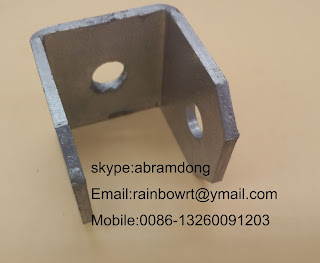Drawing is a metal working process which uses tensile forces to stretch metal.As the metal is drawn (pulled), it stretches thinner, into a desired shape and thickness. Drawing is classified in two types: sheet metal drawing and wire,bar and tube drawing.The specific definition for sheet metal drawing is that it involves plastic deformation over a curved axis. For wire, bar, and tube drawing the starting stock is drawn through a die to reduce its diameter and increase its length. Drawing is usually done at room temperature, thus classified a cold working process, however it may be performed at elevated temperatures to hot work large wires, rods or hollow sections in order to reduce forces.Drawing is one type of extrusion.
Drawing differs from rolling in that the pressure of drawing is not transmitted through the turning action of the mill but instead depends on force applied locally near the area of compression.This means the amount of possible drawing force is limited by the tensile strength of the material, a fact that is particularly evident when drawing thin wires.
Processes
Sheet metal
The success of forming is in relation to two things, the flow and stretch of material. As a die forms a shape from a flat sheet of metal, there is a need for the material to move into the shape of the die. The flow of material is controlled through pressure applied to the blank and lubrication applied to the die or the blank. If the form moves too easily, wrinkles will occur in the part. To correct this, more pressure or less lubrication is applied to the blank to limit the flow of material and cause the material to stretch or set thin. If too much pressure is applied, the part will become too thin and break. Drawing metal is the science of finding the correct balance between wrinkles and breaking to achieve a successful part.
Deep drawing
Sheet metal drawing becomes deep drawing when the workpiece is drawing longer than its diameter. It is common that the workpiece is also processed using other forming processes, such as piercing,ironing,necking,rolling,and beading.














